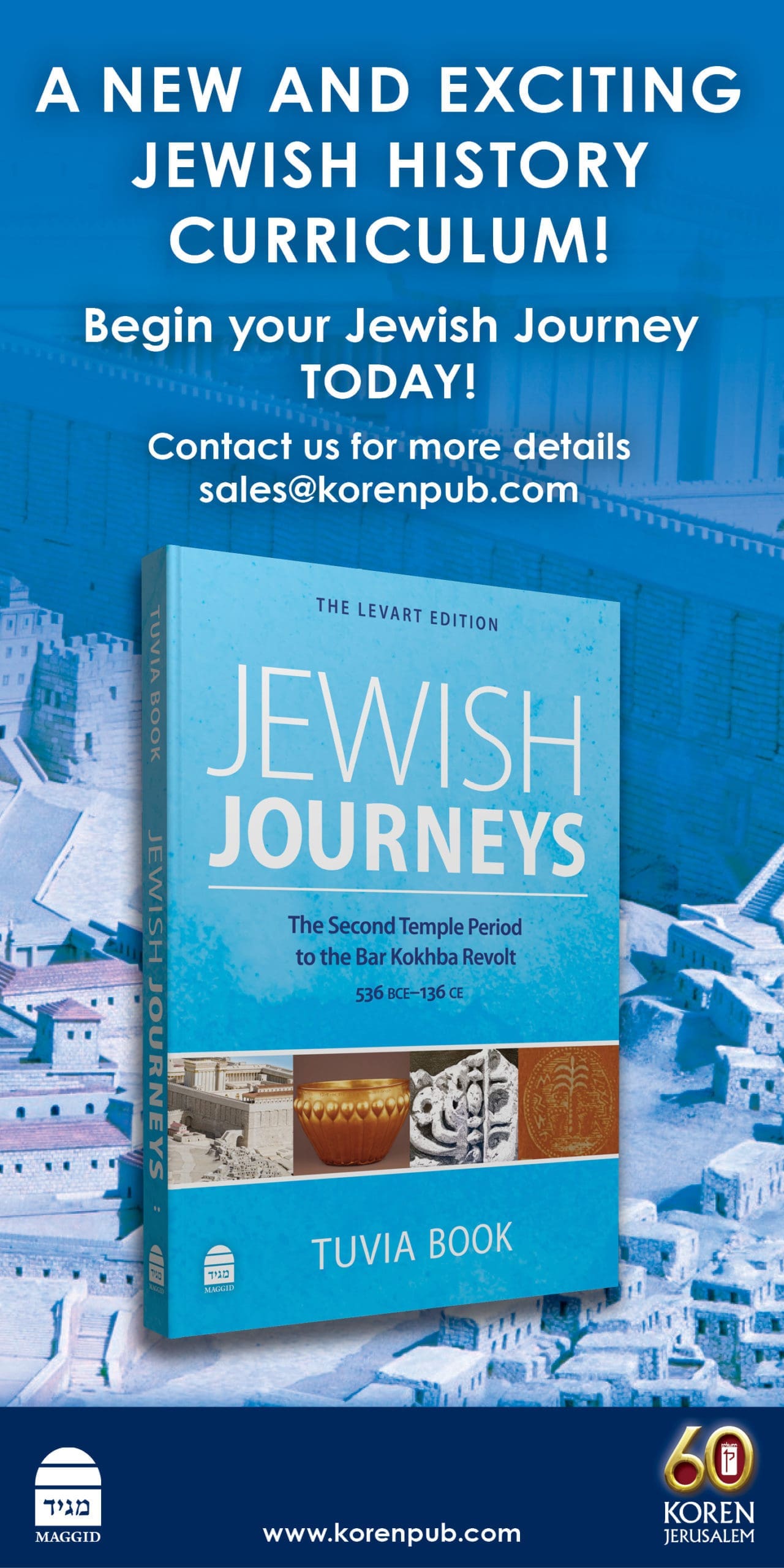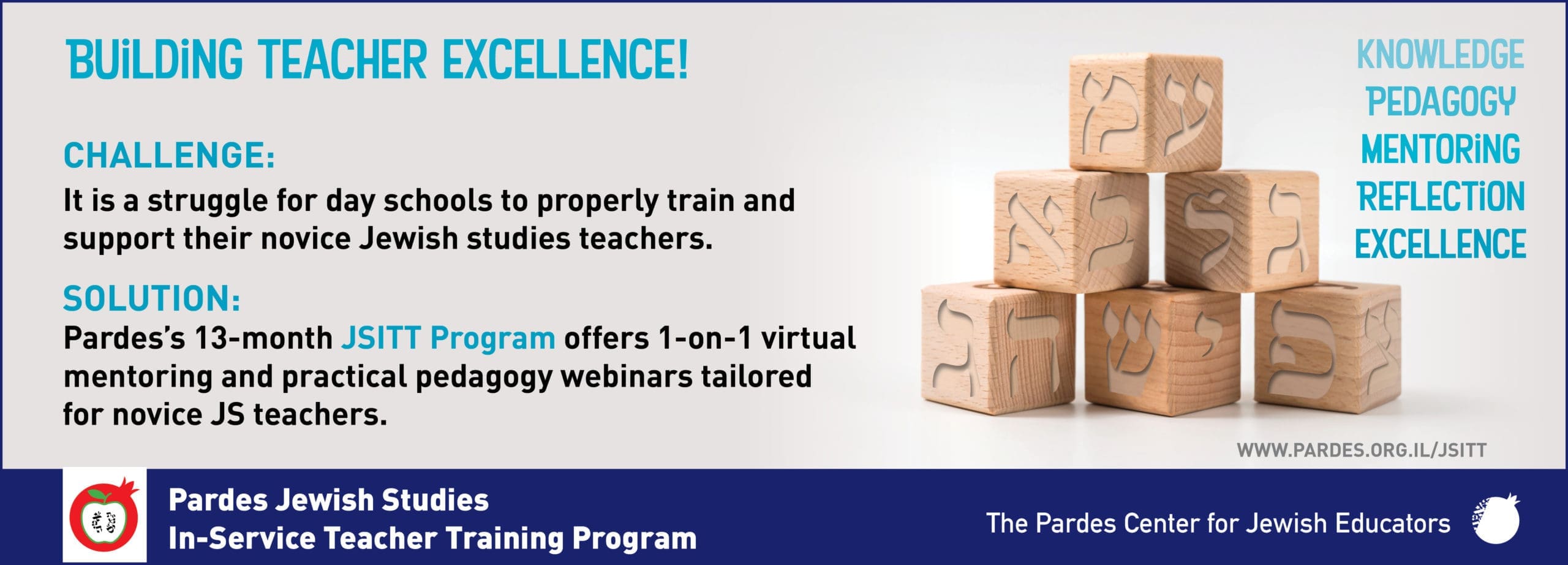- The Challenges
Those of us reading this journal are a pretty self-selected group. We love studying Jewish text. We find meaning and value and personal relevance in the word of God, in the divinely inspired writings of our ancient leaders, and in the holy and courageous power of the rabbinic project. We care deeply about Jewish history, and the compiled written chronicles of these past 3,500 years. For many of us, learning Torah fosters a state of “flow”—when we are in the zone, fully absorbed, fully alive.
But this is definitely not the case for many of our students. For them, the study of classical Jewish text is a struggle. It feels old. Antiquated. Archaic. Illegible. Irrelevant. Foreign. Alien. Lackluster. Tedious. Lifeless. Black writing on white paper.
And while we know this to be the case, we simultaneously hold onto another “knowing”—that the only way we can expect students to be able to learn Torah themselves, independently, later on in life, is if we hand over to them the technical skills to decode, decipher, interpret, and analyze those texts while they are still in our sphere of influence in day school.
As such, on one shoulder sits that responsibility to train towards independent learning of Jewish text. On the other perches the uncomfortable knowledge that many students find the methodological process of learning to closely read those texts to be completely disconnected from their own lives.
My colleagues and I at the Pardes Center for Jewish Educators wondered: could we help narrow the chasm that often exists between our students and texts? Could we bring those texts to life in ways that would make the close and careful reading of our tradition an inherently meaningful, engaging, positive experience for our young learners?
Before we answer those questions, we have to flag one more seemingly obvious but often overlooked “knowing”: that to solely fall back on the affective domain, the realm of meaning-making (or, as we like to call it, meaning-mining), as the one where the relevance and bringing-the-text-to-life happens, is to relegate the learning of Torah content and text skills to the second class citizenry of Jewish studies. And that, as we’ve already noted, won’t help us in the long run.
- The Hypothesis
I would venture a guess that our self-selected group of journal readers, besides finding deep existential satisfaction in the act of Torah study, can also point to many, many Jewish experiences over the years that have positively informed their spiritual and religious lives. Getting dressed in white and blue for and attending kabbalat shabbat at sleepaway camp; taking part in musical havdalah on a youth group shabbaton; attending a service learning trip to Guatemala during college with Hillel; understanding the Deborah and Barak story so much more viscerally while on a tiyul at Mt. Tabor; making the blessing of sheheheyanu at school with our students when we use newly donated iPads for the first time—these are the moments of connection that have shaped us Jewishly.
As such, my colleagues and I also wondered: could we borrow from these magical experiential moments and events and apply them to the Jewish day school classroom? But even more importantly—could we use some of the most tried-and-true tools of experiential Jewish education not only to spark meaning-mining, but also to better teach vocabulary, the structure of the sugya, a breadth of content, and interpretation skills? Could we conjure up a day school world in which we could “experientialize the text”?
In order to do so, we turned back to the seminal work of Professor Barry Chazan, one of the most influential professionalizers of the experiential Jewish education field over the past half-century. Chazan defines eight attributes or characteristics of experiential Jewish education (called informal Jewish education in its earlier iterations):
- Person-centered Jewish education
- The centrality of experience
- A curriculum of Jewish experiences and values
- A pedagogy of interactivity
- The group experience/the group as educator
- An immersive culture
- Playfulness
- The holistic educator
We didn’t engage with the two unbolded of Chazan’s attributes because we were hoping to develop an approach that could work with almost any pre-existing curricular materials and choices that Jewish studies teachers and day schools might have already developed. Furthermore, we wanted to stay away from the educator him/herself as a particular attribute, and stick to the how rather than the who.
We were thus left with the six bolded characteristics above. What was next?
- The Process
As the teaching of Tanakh seemed to be the “easier” to align with Chazan’s categories, we chose to focus on the teaching of Mishnah as a starting point. Different members of our team picked various mishnayot that we knew were popularly taught in Jewish day schools and set out to create sample units of teaching that would include engaging learning activities which could be tagged as person-centered, interactive, immersive, etc.
Because we wanted to cover the range of not only meaning-mining but also skill-building, we deconstructed our newly created units into the following four Mishnah-learning categories:
- Decoding, vocabulary literacy, understanding the peshat
- Concepts (which included two sub-categories: oft-used Mishnaic/Rabbinic terms throughout the study of Mishnah, and concepts core to the main idea of this particular mishnah)
- Structure of the mishnah (or of Mishnah in general)
- Theme (i.e., the bigger idea or set of ideas this mishnah connects to)
Our goal in working alone on separate units was to see whether there were replicable strategies and techniques that could be used across the teaching of Mishnah that fit Chazan’s experiential education categories. We drafted a series of strategies charts—one for each of the four Mishnah-learning categories listed above, each category delineated into the six experiential Jewish education attributes we were going to be using. For example:
| THEMES | |||
| Name of strategy/ tool/ technique | Description of strategy/ tool/ technique | Specific Examples | |
| Person-Centered | |||
| Centrality of Experience | |||
| Immersive Classroom | |||
| Playfulness | |||
| Interactivity | |||
| Group as Community | |||

Aviva Lauer is the Director of the Pardes Center for Jewish Educators (PCJE). Previously, she developed educational materials for Melitz and at the Leo Baeck Education Center, and was head of Jewish Studies at Immanuel College, London. At PCJE she has served as teaching coach, director of recruitment, and director of the Summer Curriculum Workshop.
Reach 10,000 Jewish educational professionals. Advertise in the upcoming issue of Jewish Educational Leadership.
Do you want to write for Jewish Educational Leadership? See the Call for Papers for the upcoming issue.
- What We Found
After working individually or in hevrutot, we presented our units to each other over a series of several days and attempted to fill in our charts. Here are some of the interesting things we initially noticed:
- We found that many of the techniques that were independently suggested included a lot of movement or physicality. For example—in the Concepts category, in order to teach the dichotomous Mishnaic/Rabbinic concept pairs such as patur/hayav; mahmir/meikil, mutar/asur, etc., we identified a technique called Concept Embodiment in which students come up with agreed-upon whole-body sign language signs that illustrate and express the concept pairs, which they then use each time they encounter those terms.As such, we questioned whether we should add another characteristic category entitled physicality, or whether what we were understanding as physicality was actually Chazan’s centrality of experience.
- We found that sometimes, people had a difficult time crafting learning activities that would transcend the content of just one mishnah or sugya, that could fit in a bank of activities to be used generically to teach, for example, the vocabulary or the structure of any Mishnaic text. For example—the suggestion that students can establish an actual ‘lost and found’ in their school after studying Baba Metzia 2:1: אֵלּוּ מְצִיאוֹת שֶׁלּוֹ, וְאֵלּוּ חַיָּב לְהַכְרִיז is a beautiful example of a learning activity that experientializes the mishnah. It makes the ancient rabbinic text relevant to students’ very own lives; it reinforces and brings to life the Jewish values taught in the text; it enables the students to undergo a meaningful Jewish experience. However, it is not an activity that can easily be transferred to the teaching of other Rabbinic texts.As such, we are still considering whether we should add a fifth category of Mishnah-learning techniques, called “Content,” which might yield ideas that could be applied to the learning of other mishnayot, but don’t necessarily need to.
- We found that some of the experiential education attributes we had chosen from Chazan’s eight were just not touched upon all that much. For example, while person-centered, immersive classroom environment and playfulness were experiential education characteristic categories that we referred to over and over, the category of group as community was more difficult for us to employ.
- Where We Are Now
Our first contribution is a step-by-step planning guide for teachers who seek to “experientialize” a curricular unit of Mishnah. Second, we offer here a table of engaging learning activities, categorized according to our favorite of Chazan’s experiential education characteristics. We share both of these here with a real understanding that we are still in the early stages of our “experientializing the text” process. We welcome—more than welcome!—feedback and suggestions from educators who use it.
At this point, we also wonder: while it is always novel to invent a new verb (“experientialize/experientializing”), is our term the correct and most appropriate description of what we are trying to do? Perhaps, what we are talking about, while definitely an adaptation of the definitions and categories of the experiential Jewish education field to the day school classroom, would be better served with a different name—something like, “bringing the text to life”? After all, when we are in the zone—studying Torah—that is the most alive one can feel. And we wish that for our students, every single day.
We look forward to your thoughts and feedback, and even your collaboration!





